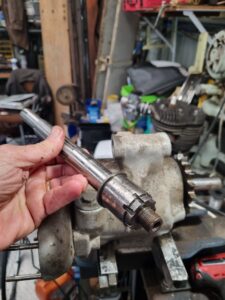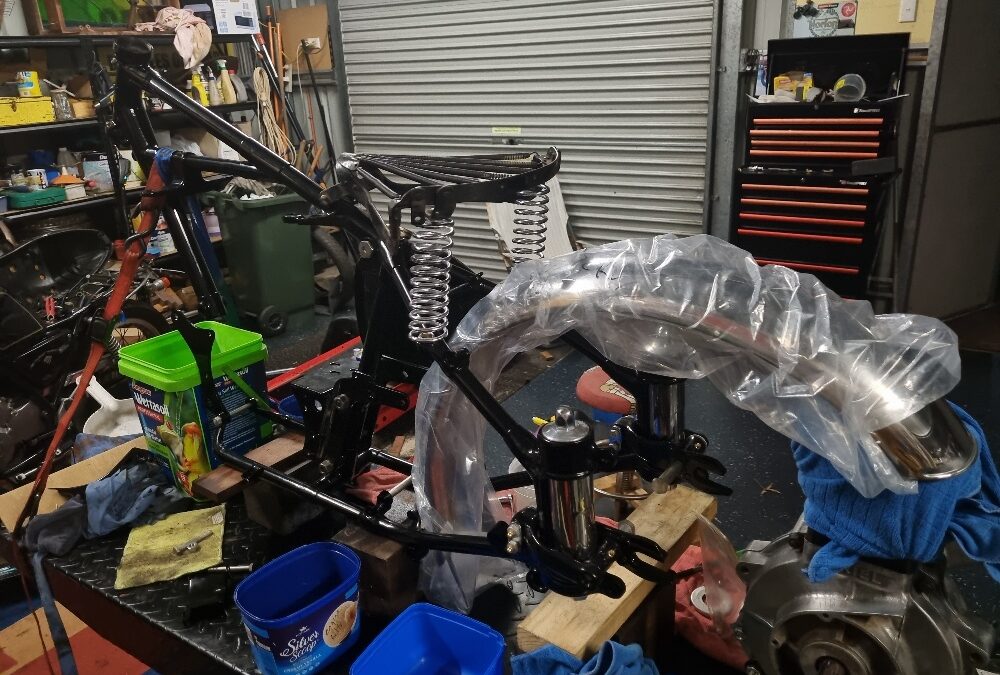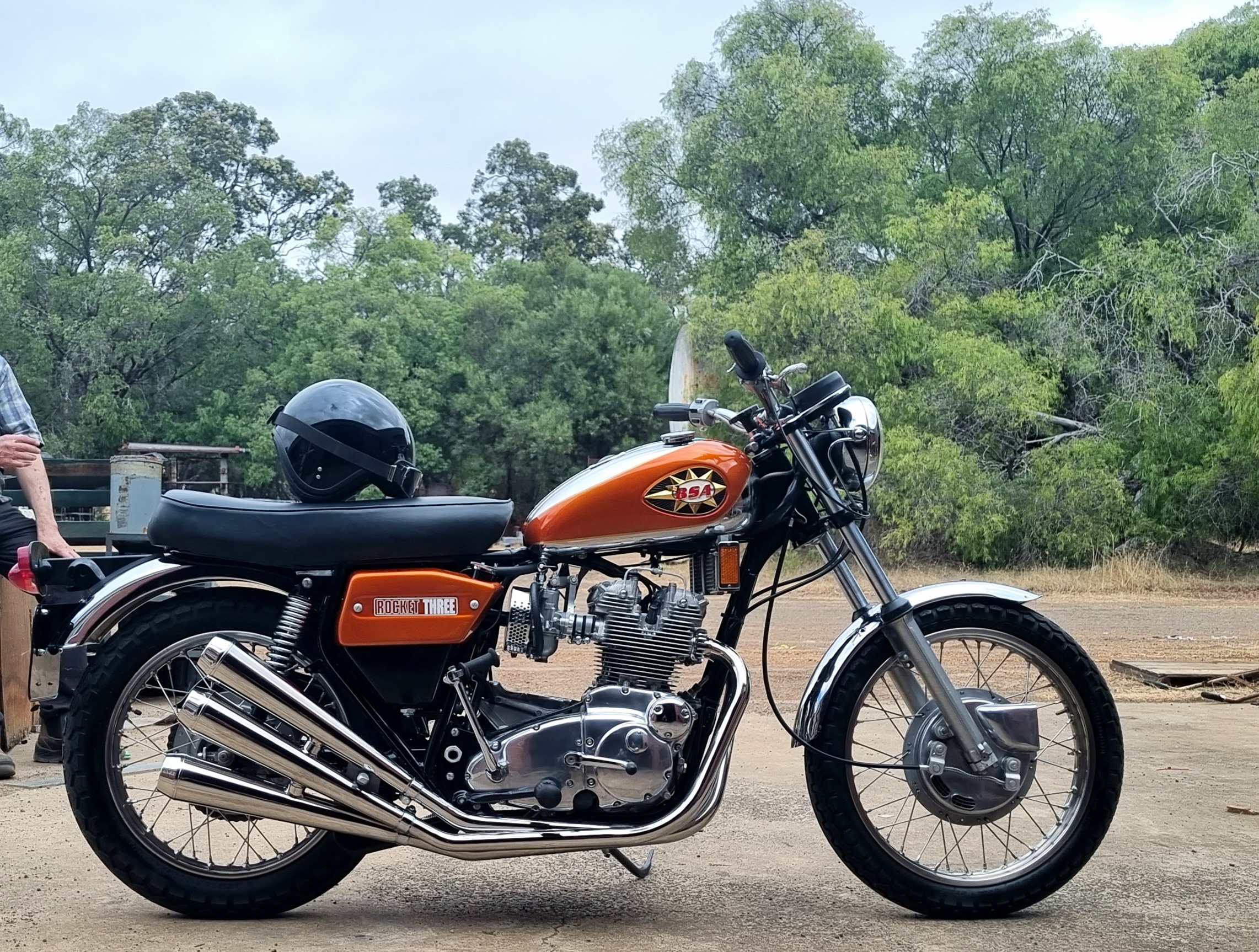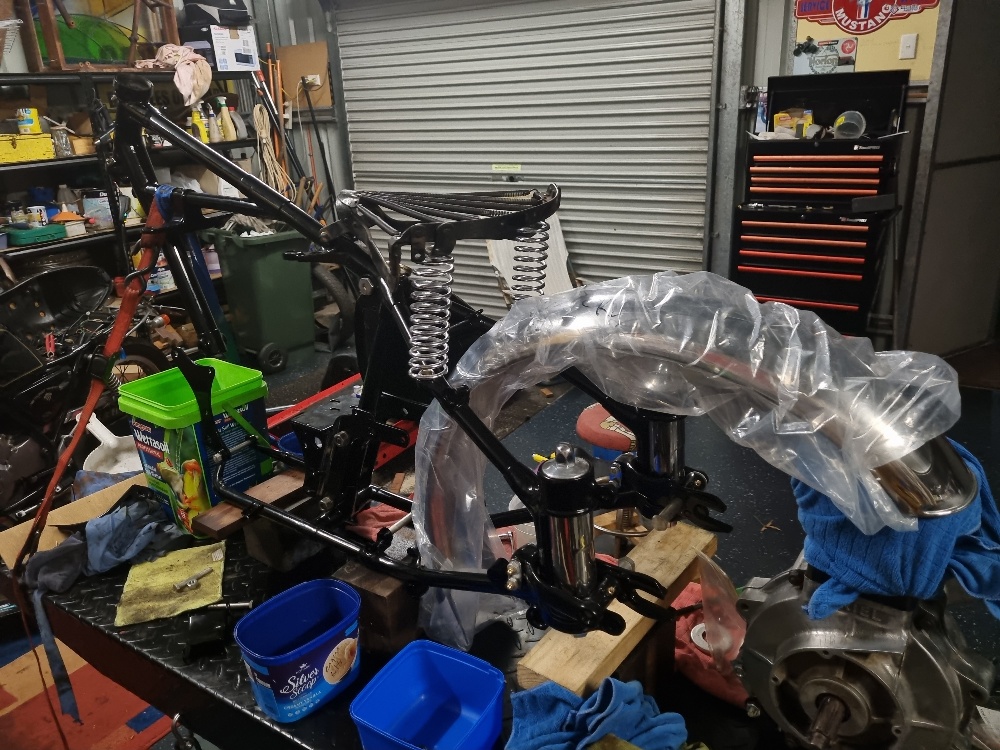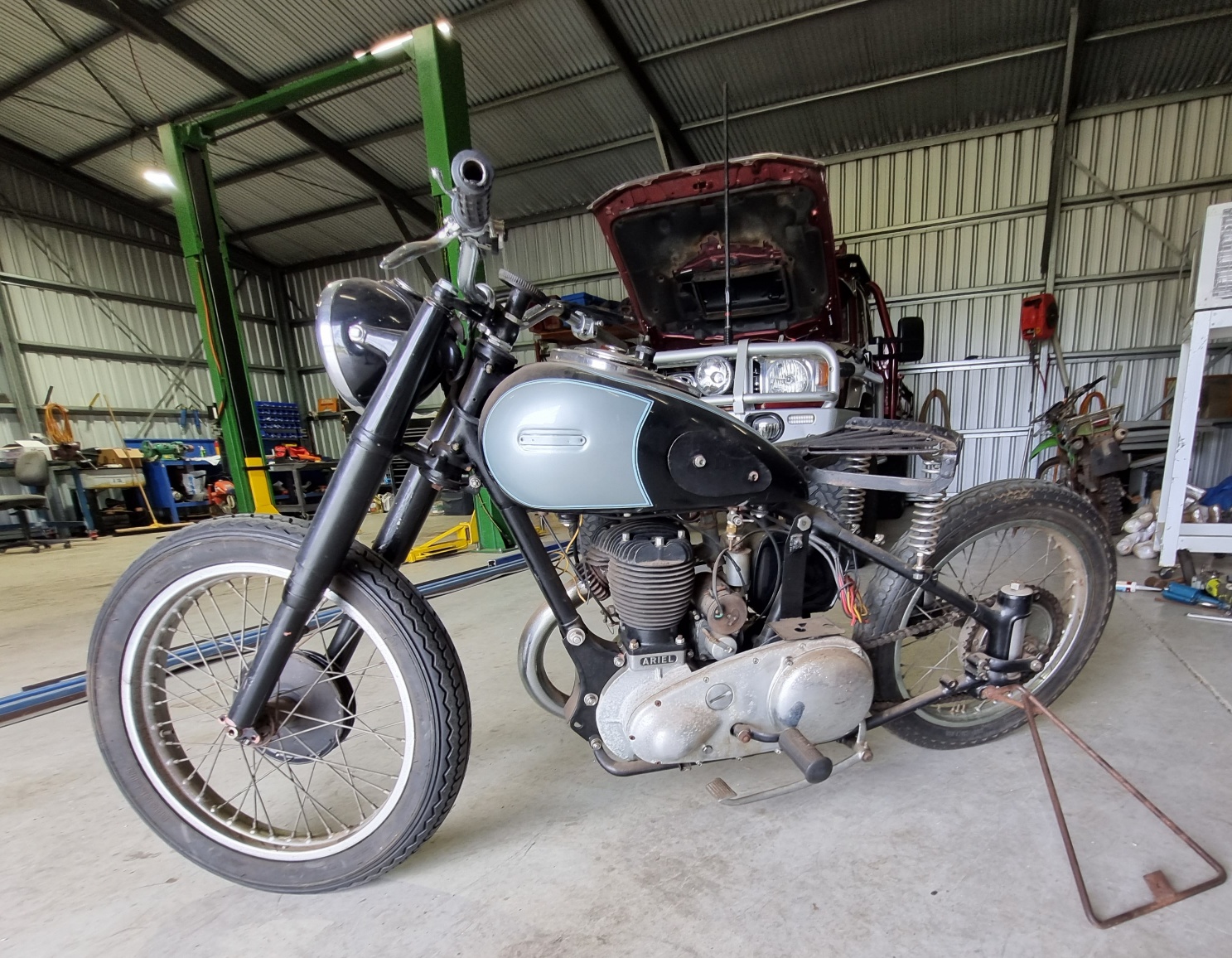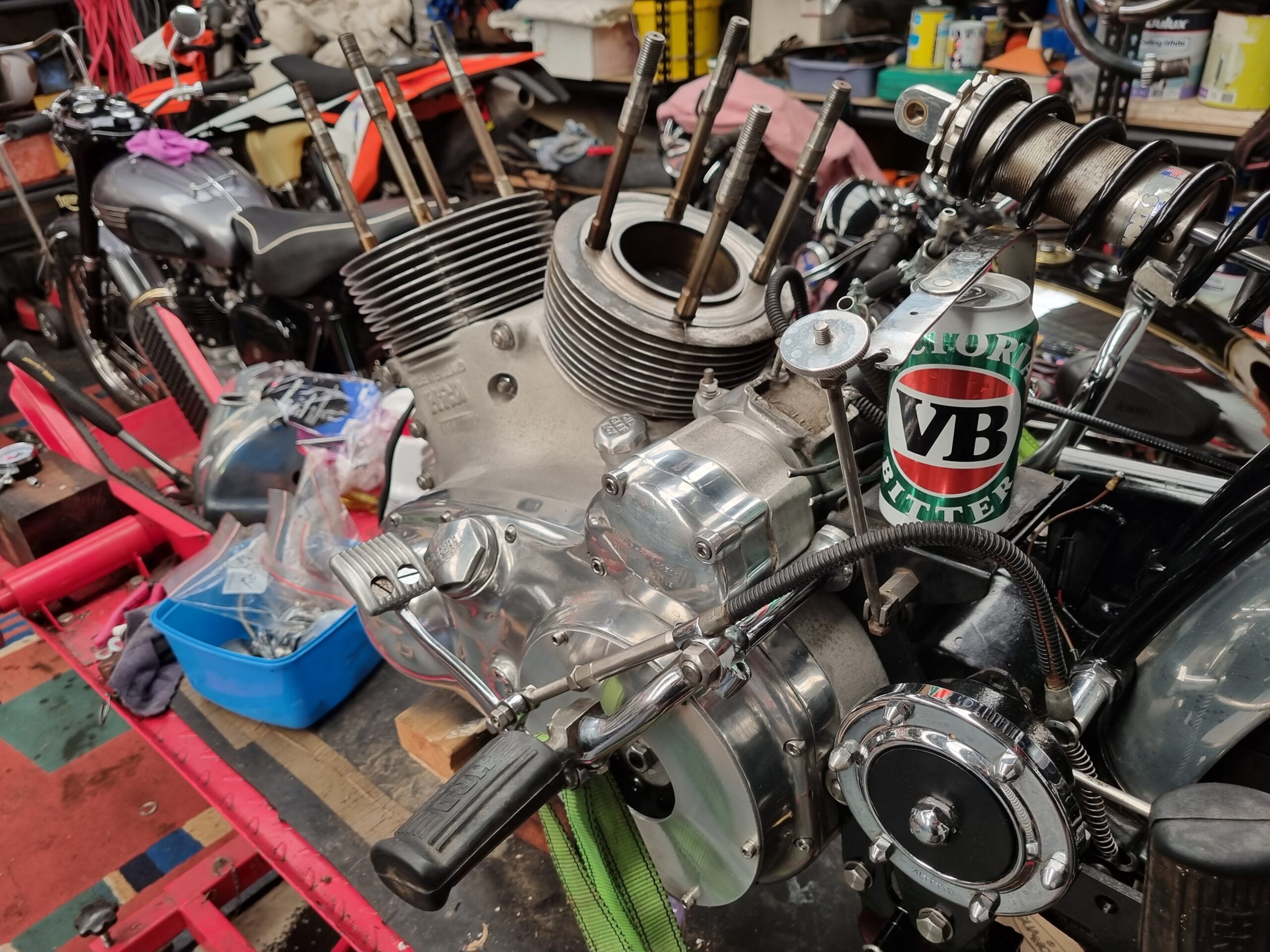Over the past thirty years or so of involvement in classic motorcycles I have witnessed the evolution of the spare parts industry as it has gone through various stages to the point where we are now at, with everything we may need merely a click away. I suspect we’ve all had those experiences with the cursor hovering over something that’s far too expensive, one glass of Shiraz too many and ‘click’ it’s mine. Check billet alloy bonnet hinges on my Mustang.
In my experience you need not stop at alloy bonnet hinges, it is possible to build a whole 1966 Mustang, or a 1914 Model T car or a 1948 Vincent twin, entirely from after-market spare parts. Often those parts come from the UK or the US but more and more these days they are made in Taiwan and India.
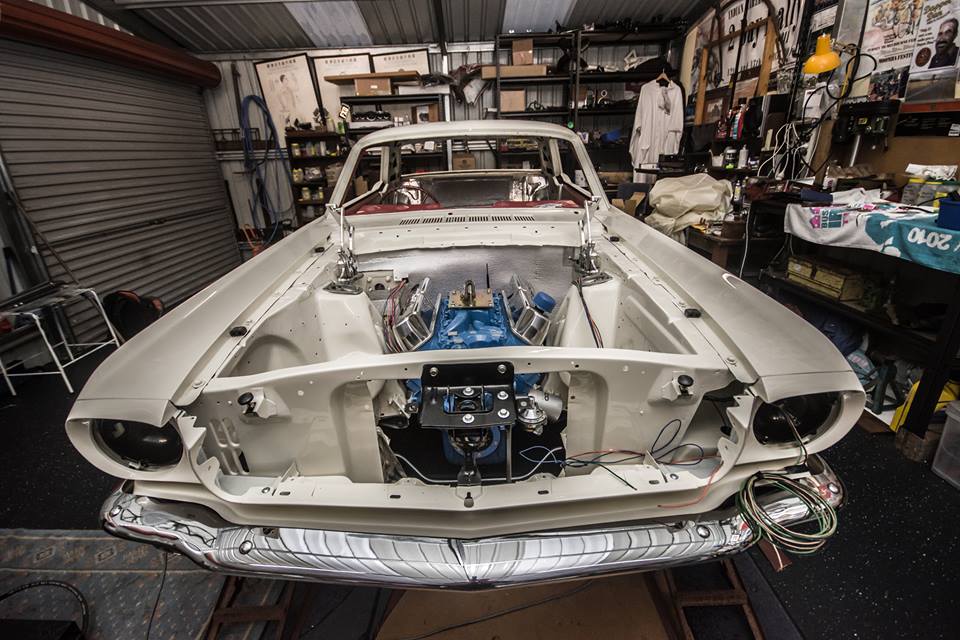
“The bitterness of poor quality remains long after the sweetness of low price is forgotten” Benjamin Franklin would approve.
If you look at the Mustang just about every body panel you see, except the roof, are Dynacorn pressings out of Taiwan and Mexico. Towards the end of my Mustang restoration, I had a display plate made up that read ‘THESEUS.’ The Ship of Theseus is a thought experiment that asks if a ship, for example, has had all of its original planks changed during its lifetime is it still fundamentally the same ship? If not, at what point, what number plank, did it cease being the ship of Theseus?
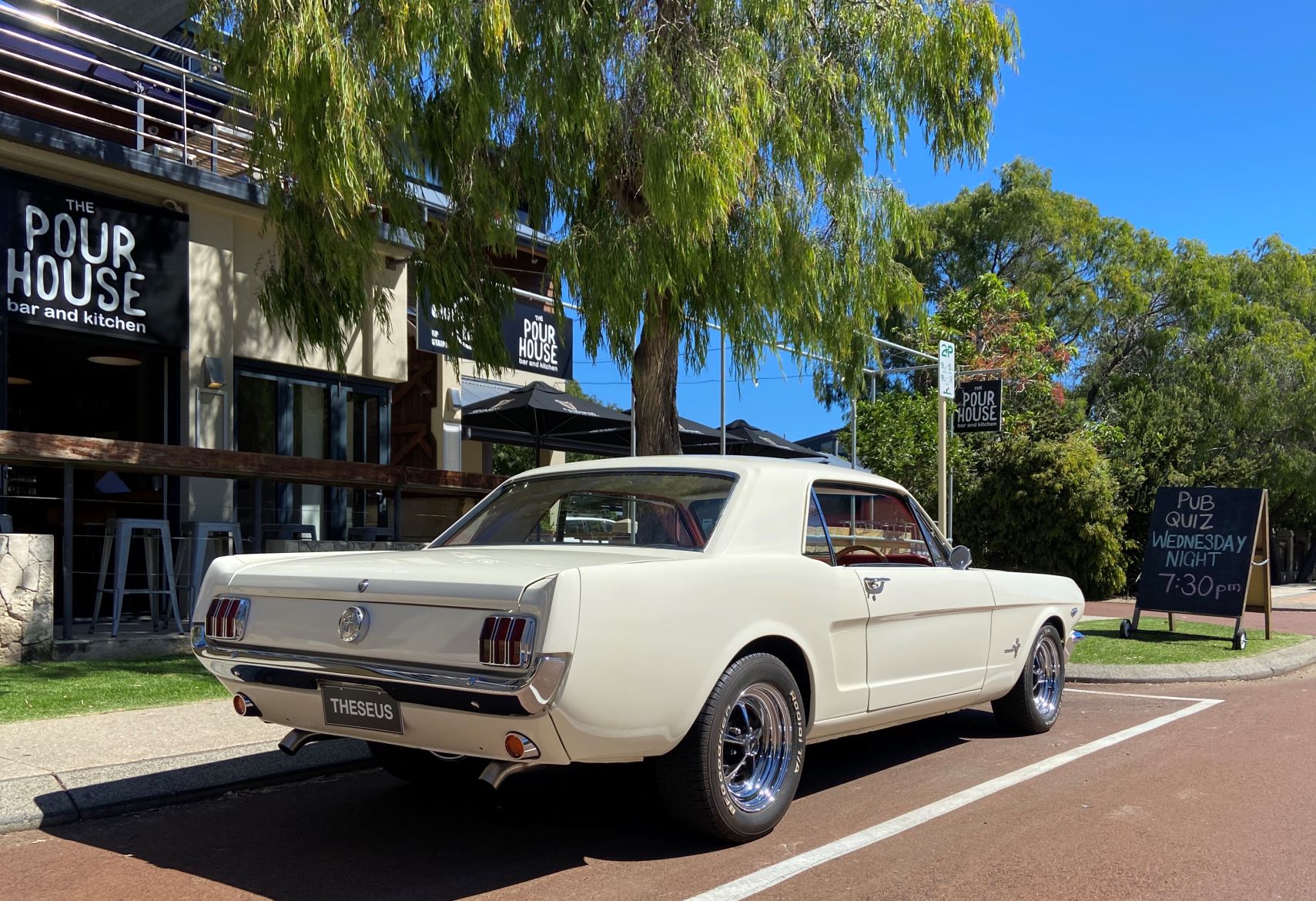
For a time, in fact a long time, the Mustang was driven on a DoT permit bearing the plate THESEUS. This generated enough perplexity to ensure spending a small fortune on the actual DoT plate was not a good idea.
In terms of motorcycles, in 2007 the Vincent Owners Club constructed a complete replica Black Shadow from their parts catalogue. The machine was sold at auction the following year for 34,000GBP, a not an insubstantial amount in 2008 but few would quibble as the machine was made entirely from parts manufactured in the UK. Had those parts been sourced from the Indian subcontinent the machine might not have been so well received.
Spare parts for Ariel and BSA are plentiful and can be delivered from the other side of the world more quickly than the other side of Australia. Due to my leaning towards British motorcycles my path to spares usually begins with local suppliers then extends to the WA metro area before the East Coast of Australia then the UK. At any time during those searches, I can be presented with brand-new, reproduction items, usually out of India.
Reproduction parts are such a big thing these days they even have their own slang: repop. They are made all over the world and, according to some, geography and quality have a direct relationship. I recall, in the days before Ebay, a member of the MG Car Club in Perth wanted a chrome radiator surround. He was informed by a fellow club member that a firm in South Australia was reproducing these items, upon which he was heard to retort, “I will not have any Australian-made junk on my car.” He ordered the piece out of the UK, no doubt at great expense, only to read “Made in Australia” stamped beneath the chrome when he unpacked his newly purchased English radiator surround.
Indian reproduction parts tend to be a bit of a lucky dip. Online chat forums are crowded with arguments for and against the quality of Indian repop spares. I’m going out on a bit of a limb here, but I will wager a good many of the motorcycle spares being sold off in the UK are of Indian origin. For the record, I have had good luck with repop fuel tanks, leather saddles etc so I am usually in the ‘for’ camp.
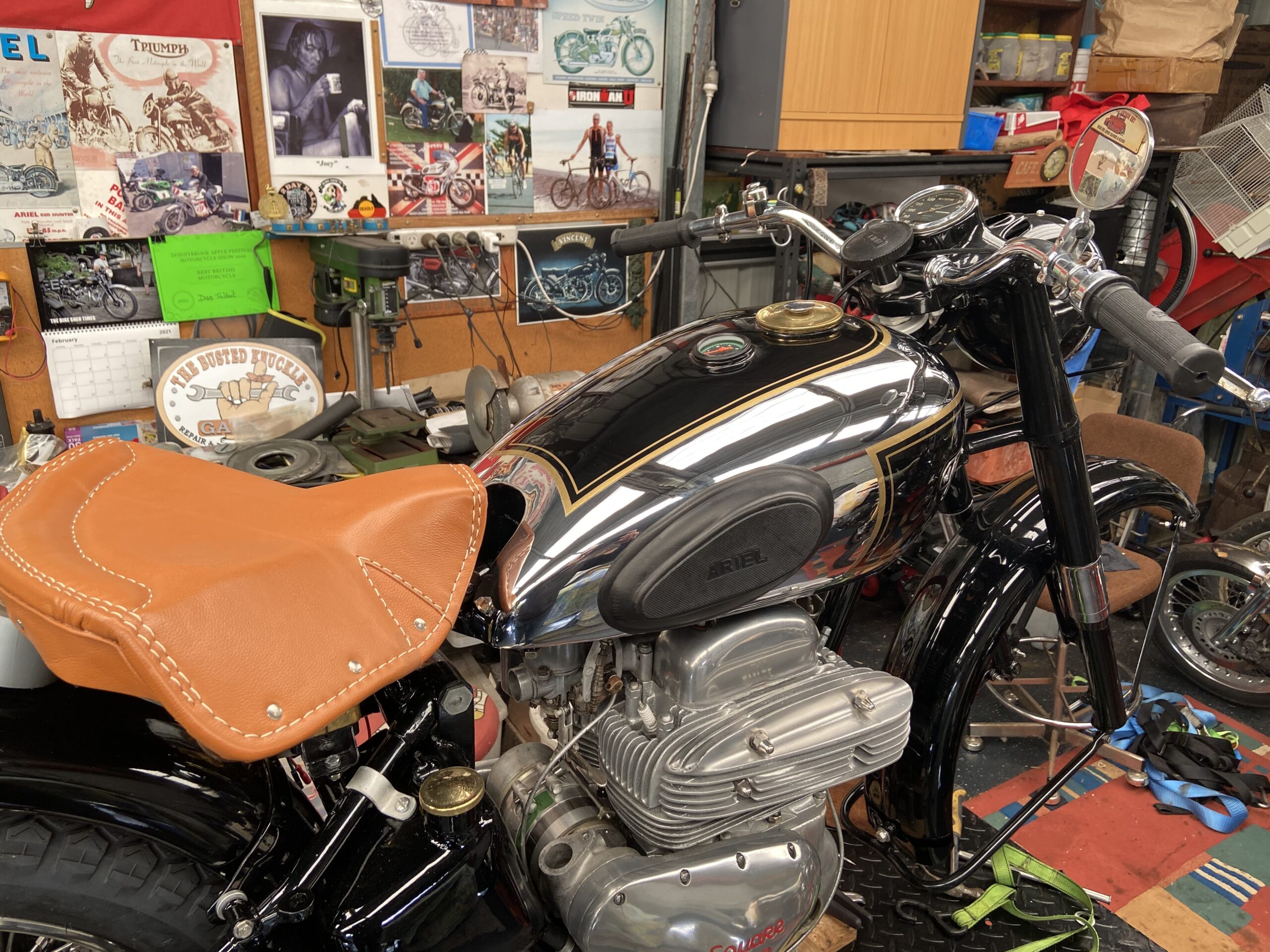
This tank on the Square Four arrived in Australia chromed and painted for about $500. It is first class quality. The leather seat cover was also sourced from India but the colour had to be toned down with some darker die than shown here.
This brings us neatly to my current rebuild, the Pindan Special, a ’39 Ariel 500 that that I introduced last month.
The Ariel came with a sound fuel tank that had been painted in 1989 and was subsequently set aside, unused. The state of the tank under the paint was unknown but it looked decent, so I really wanted to keep the tank, rather than import a new one out of India. Both the Deluxe and Red Hunter versions of my machine had chromed and painted tanks. To chrome a fuel tank can cost upwards of $1,000 and one can be well into the job before it is even known if the tank can be salvaged. Add another $1,000 for paint and pinstripe and the tank suddenly becomes a very costly item. Further, this machine was never going to be concourse. It’s part Hunter, part Deluxe and part bitza. I also have to keep reminding myself the primary reason for the build is a red dust racer, a bike for tearing across the pindan.
Building a machine for an event that will come around every three or four years is an extravagance in itself, agonizing over decisions to chrome or not to chrome was largely redundant as I could have manufactured in India and landed in WA, painted and chromed, for around $500. That would have been the sensible thing to do but it would irk me every time I saw the original tank sitting on a shelf. In the end, I opted for all-over gloss black, harking back to the VB origins of the machine.
So, to cut to the chase, the tank is back home resplendent in glossy, gloss black with a gold pinstripe – just like half the other machines in my shed. Thanks to Joe at Panelworx in Bunbury, the tank really does look amazing. With the dash panel being finished in chrome, the machine has just the right amount of lustre.
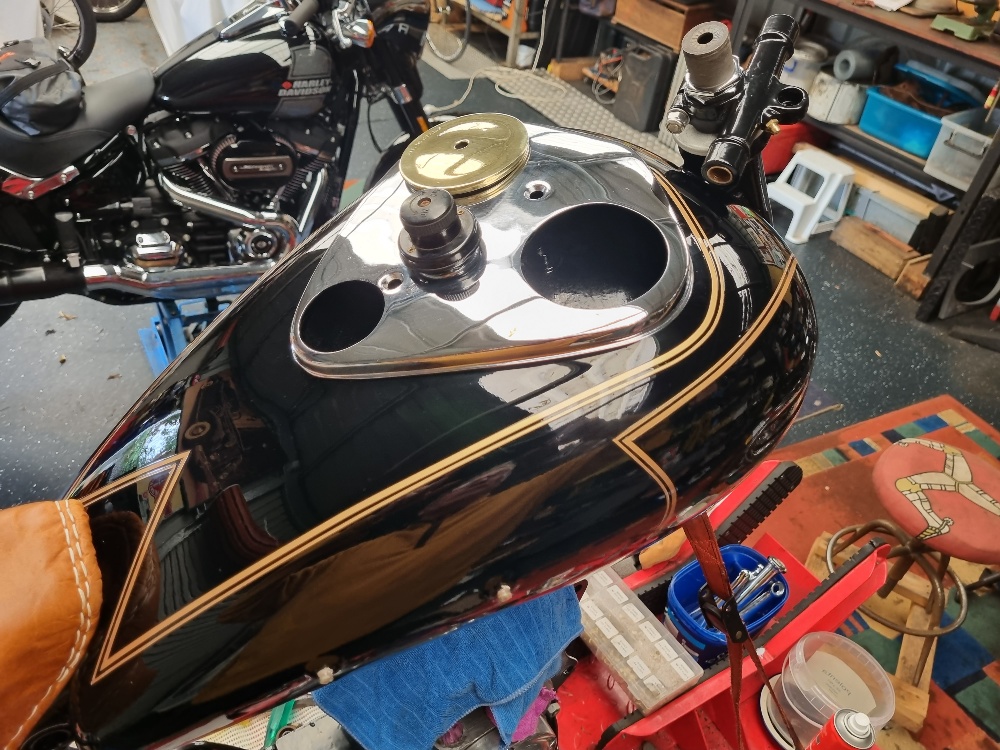
The original tank, dash panel fuel cap and trouble light switch are reunited temporarily before being tucked away to a safe place.
Elsewhere on the bike, I’ve recently fitted a Morgo rotary oil pump. I know this irks some folk who will insist the standard pump, designed about 100 years ago, is entirely sufficient but they are mostly puttering around the UK at 35 mph. I will have my machine pegged to the stop in the Australian desert so she will need all the help it can get and pushing oil through the engine (and the filter I’ve fitted) at twice the original rate is a no-brainer. What does irk me, is that I had to nibble quite a bit of alloy from the internal surfaces of the timing cover where it was fouling on the larger, rotary pump.
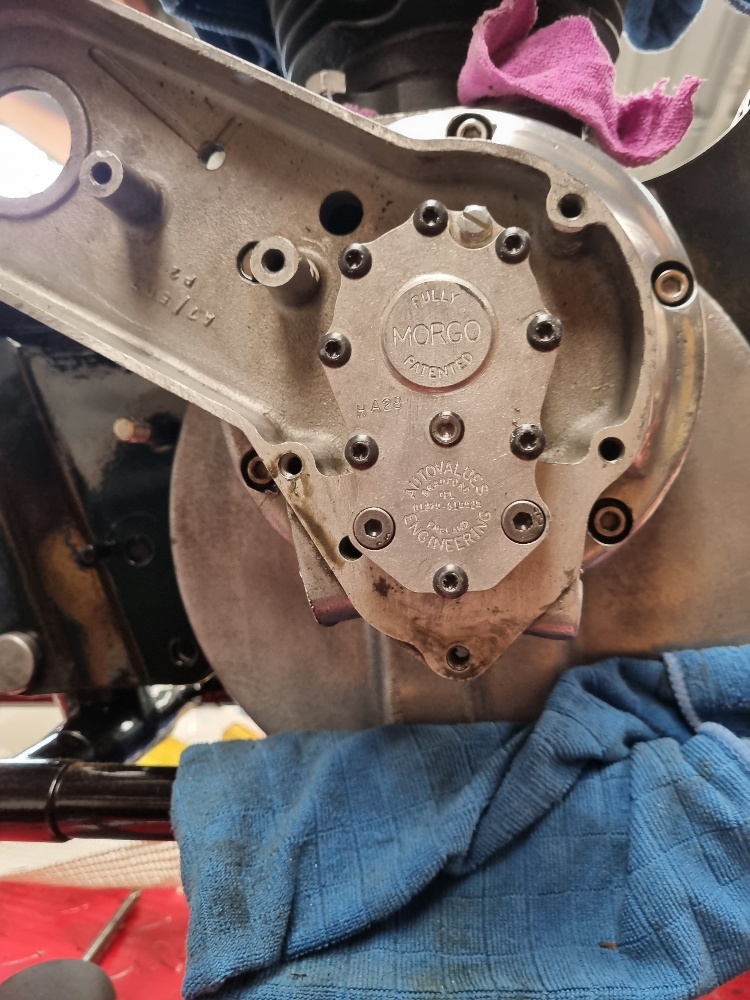
Morgo? Certainly more oil going through an engine that will be working very hard.
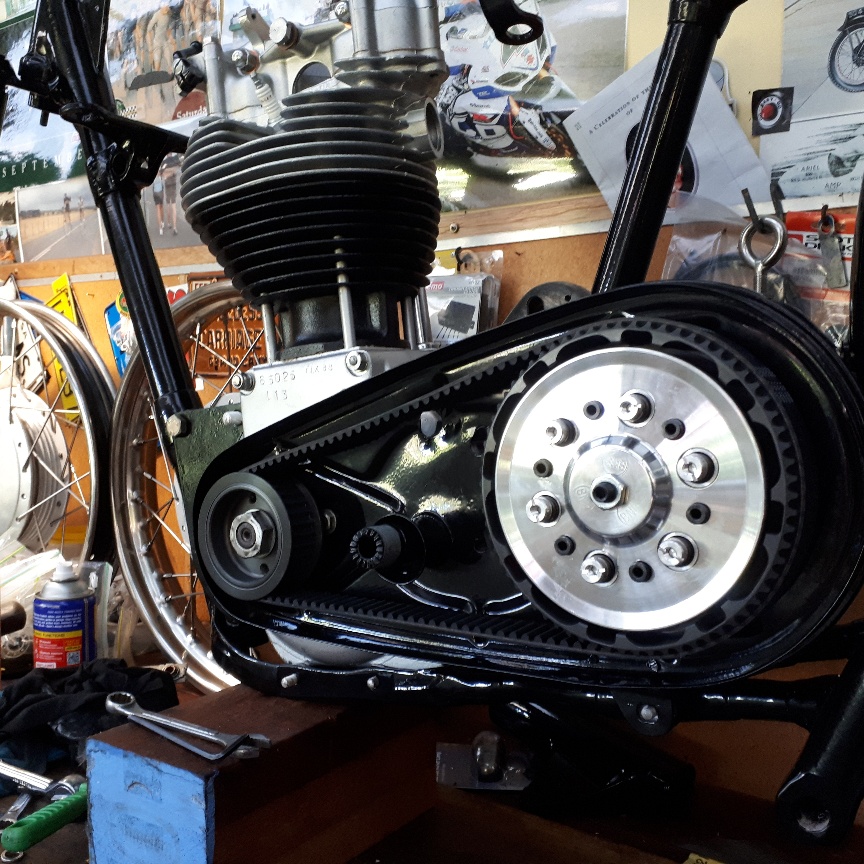
Newby belt drives and clutches are a work of art. This is one I put on the little Norton a couple of years ago.
Another thing that irks the purists are belt drives. I have secured a Newby belt drive and clutch set up. It is the fourth Newby belt drive that I have purchased and whilst they are quite expensive, they are a work of art. Added to this, the reliability of the belt, the smoothness, the outstanding Newby clutch and, most importantly, a lack of oil in the primary to leak out, are all good reason for choosing the Newby set up. Bob has only done a handful of Ariel conversions so I was flying by the seat of my parts and upon arrive, I soon learned the Newby clutch was too small for the spline on the gearbox main-shaft. I have removed the main-shaft and taken it to Brook Henry, of Vee Two fame, to have a spline cut on the shaft that will match the Newby clutch boss.
On a final note, things are held up a bit waiting on parts to arrive, mainly from the UK but also India.
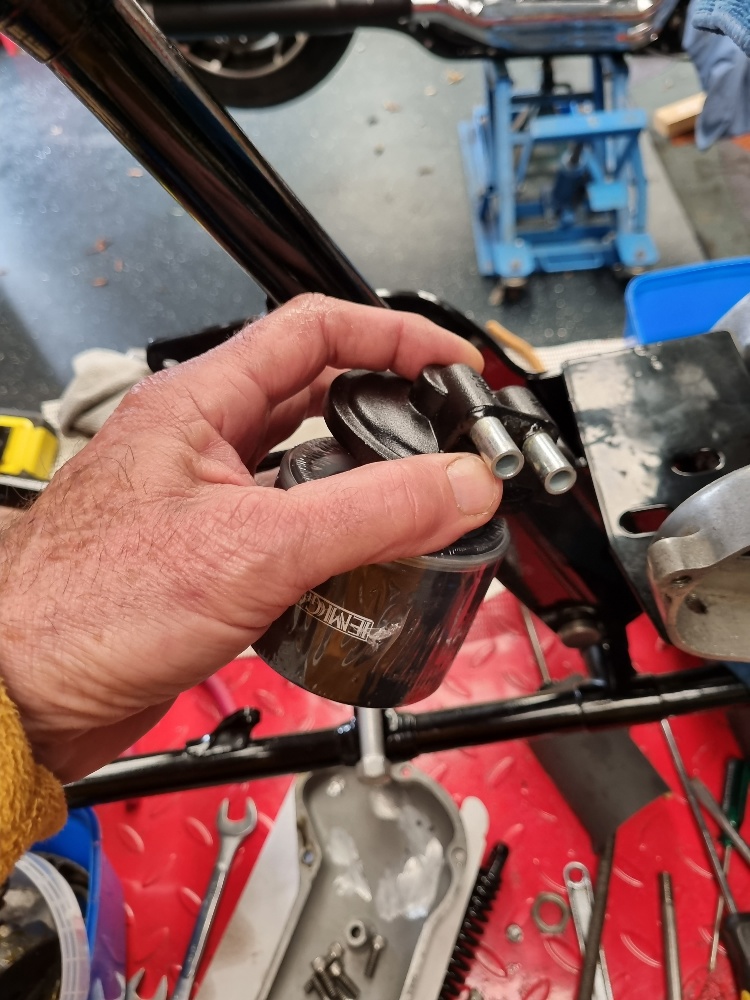
This after-market oil filter will make a worthy addition to the Special and will provide me with some peace of mind.
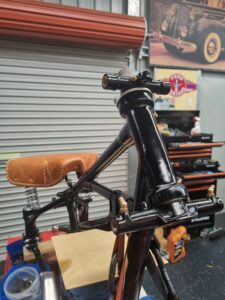
I am waiting on bushes to finish this off. The supplier first sent me four, then one and, finally, the last three. Now all of need is to exchange my new stainless spindles.
